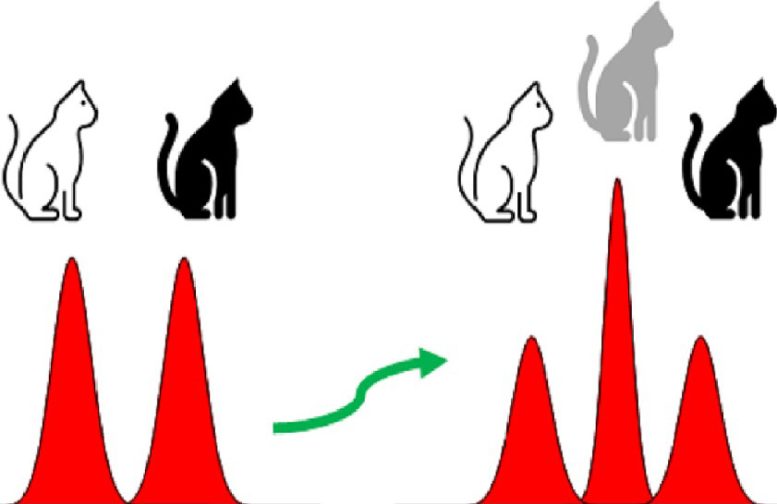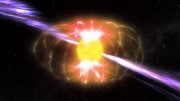
Quantum computing is advancing, with giants like Google and IBM providing services, yet challenges remain due to insufficient qubits and their susceptibility to external influences, requiring complex entanglement for reliable results. Photonic approaches offer room temperature operation and faster speeds, but face loss issues; however, a novel method demonstrated by researchers uses laser pulses to create inherently error-correcting logical qubits, simplifying quantum computing but still needing improvements in error tolerance.
Researchers have successfully created a logical qubit using a single light pulse that has the inherent capacity to correct errors
Significant advancements have been made in quantum computing, with major international companies like Google and IBM now providing quantum computing services via the cloud. Nevertheless, quantum computers are not yet capable of addressing issues that arise when conventional computers hit their performance ceilings. This limitation is primarily the availability of qubits or quantum bits, i.e., the basic units of quantum information, is still insufficient.
One of the reasons for this is that bare qubits are not of immediate use for running a quantum algorithm. While the binary bits of customary computers store information in the form of fixed values of either 0 or 1, qubits can represent 0 and 1 at one and the same time, bringing probability as to their value into play. This is known as quantum superposition.
This makes them very susceptible to external influences, which means that the information they store can readily be lost. In order to ensure that quantum computers supply reliable results, it is necessary to generate a genuine entanglement to join together several physical qubits to form a logical qubit. Should one of these physical qubits fail, the other qubits will retain the information. However, one of the main difficulties preventing the development of functional quantum computers is the large number of physical qubits required.
Advantages of a photon-based approach
Many different concepts are being employed to make quantum computing viable. Large corporations currently rely on superconducting solid-state systems, for example, but these have the disadvantage that they only function at temperatures close to absolute zero. Photonic concepts, on the other hand, work at room temperature.

The creation of a photonic “Schrödinger cat state” – in other words the quantum superposition of states of the laser pulse amplitude that can be distinguished on a macroscopic scale (white or black cat) – can only be achieved using the most advanced quantum optical techniques and has already been demonstrated to be possible. In the present experiment that is subject of the research paper, it proved to be feasible to extend this to three states (white, gray, and black cats). This light state thus approaches a logical quantum state in which errors can be, in principle, universally corrected. Credit: Peter van Loock
Single photons usually serve as physical qubits here. These photons, which are, in a sense, tiny particles of light, inherently operate more rapidly than solid-state qubits but, at the same time, are more easily lost. To avoid qubit losses and other errors, it is necessary to couple several single-photon light pulses together to construct a logical qubit – as in the case of the superconductor-based approach.
A qubit with the inherent capacity for error correction
Researchers of the University of Tokyo together with colleagues from Johannes Gutenberg University Mainz (JGU) in Germany and Palacký University Olomouc in the Czech Republic have recently demonstrated a new means of constructing a photonic quantum computer. Rather than using a single photon, the team employed a laser-generated light pulse that can consist of several photons.
“Our laser pulse was converted to a quantum optical state that gives us an inherent capacity to correct errors,” stated Professor Peter van Loock of Mainz University. “Although the system consists only of a laser pulse and is thus very small, it can – in principle – eradicate errors immediately.”
Thus, there is no need to generate individual photons as qubits via numerous light pulses and then have them interact as logical qubits. “We need just a single light pulse to obtain a robust logical qubit,” added van Loock.
To put it in other words, a physical qubit is already equivalent to a logical qubit in this system – a remarkable and unique concept. However, the logical qubit experimentally produced at the University of Tokyo was not yet of a sufficient quality to provide the necessary level of error tolerance. Nonetheless, the researchers have clearly demonstrated that it is possible to transform non-universally correctable qubits into correctable qubits using the most innovative quantum optical methods.
Reference: “Logical states for fault-tolerant quantum computation with propagating light” by Shunya Konno, Warit Asavanant, Fumiya Hanamura, Hironari Nagayoshi, Kosuke Fukui, Atsushi Sakaguchi, Ryuhoh Ide, Fumihiro China, Masahiro Yabuno, Shigehito Miki, Hirotaka Terai, Kan Takase, Mamoru Endo, Petr Marek, Radim Filip, Peter van Loock and Akira Furusawa, 18 January 2024, Science.
DOI: 10.1126/science.adk7560








Be the first to comment on "Quantum Computing Breakthrough: Scientists Develop New Photonic Approach That Works at Room Temperature"